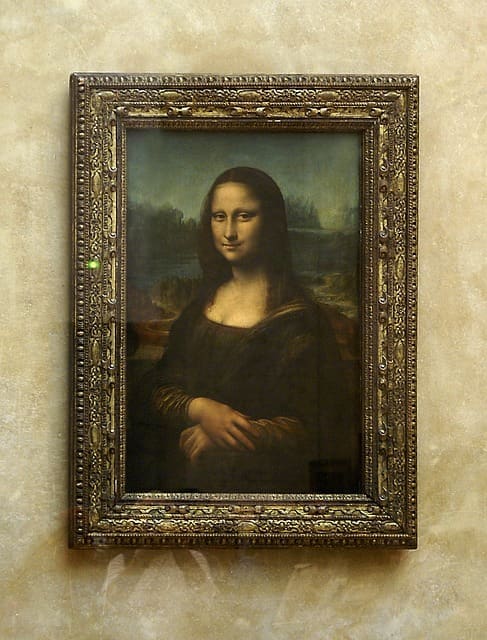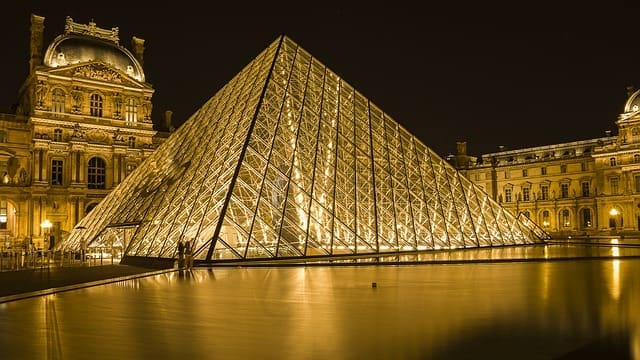The Louvre Museum in Paris is one of the most iconic art institutions in the world and a must-see for anyone visiting the city. Whether you’re a first-time visitor or a seasoned art enthusiast, a Louver Museum tour is an unforgettable experience. To make the most out of your visit, here are the top five sights to see on a Louvre Museum tour.
Top 5 Sights to See on a Louvre Museum Tour
1) The Mona Lisa
One of the world’s most famous and iconic pieces of art, the Mona Lisa is a must-see on any tour of the Louvre Museum. This 16th-century painting by Leonardo da Vinci depicts a woman with an enigmatic smile and has been the subject of countless interpretations since its creation. The Louvre has made the painting available to visitors since 1797, making it one of the museum’s oldest attractions. When visiting the Mona Lisa, give yourself plenty of time to take in this incredible masterpiece. From the subtle shading of the woman’s face to the background landscape, every detail of this painting will leave you awestruck. The museum even offers audio tours for those who want to learn more about the painting and its fascinating history. Usually, this part of the museum is incredibly crowded, which is why it might be a good investment to buy yourself the Louvre museum skip the line tickets.

2) Venus de Milo
The famous Venus de Milo is one of the most recognizable sculptures in the world. It was found on the Greek island of Milos in 1820 and is believed to have been sculpted by Alexandros of Antioch in the 2nd century BC. It is currently located in the Louvre Museum in Paris, where it has been displayed since 1821. This statue is a representation of Aphrodite, the ancient Greek goddess of love and beauty. The sculpture is most noted for its missing arms and its calm facial expression, which gives the figure an otherworldly sense of beauty and poise. Venus de Milo is widely regarded as a masterpiece of Hellenistic art, and it continues to captivate visitors who come to the Louvre Museum to marvel at this iconic piece.
3) Liberty Leading the People
One of the most iconic pieces at the Louvre Museum is Liberty Leading the People, a painting created by Eugène Delacroix in 1830. The work depicts a woman wearing the French tricolor, leading a group of people forward during the Revolution of 1830. Liberty holds a gun in her right hand and carries the French flag in her left hand. The French Revolution inspired the painting, and it’s considered an important symbol of the power of freedom and democracy. The painting is incredibly detailed, with each figure and face carefully crafted. The painting’s subjects range from an old man to a child, with flags, guns, and bayonets scattered throughout the painting.
4) The Wedding Feast at Cana
Located in the Louvre Museum’s Denon Wing, The Wedding Feast at Cana by Paolo Veronese is one of the most iconic and celebrated works of art in the world. The Wedding Feast at Cana depicts a biblical scene from the Gospel of John where Jesus attended a wedding feast and performed his first miracle by turning water into wine. Depicted in this painting are life-sized figures which serve to capture a dramatic moment of the scene, with characters in various poses. Jesus is depicted in the center of the canvas, surrounded by dozens of guests wearing vibrant Renaissance-style costumes and hairdos.
5) Apollo Belvedere
The Apollo Belvedere is a striking marble sculpture of the Greek god Apollo, most likely crafted in the early 1st century AD. It is located in the Louvre Museum and is one of the most famous ancient sculptures in the world. The sculpture depicts Apollo in an idealized youthful form, standing with a confident posture, balanced on one foot and looking off into the distance. The sculpture has had a long history; it was discovered in Rome in 1489 and soon became a prized possession of Pope Julius II. In 1797 it was transferred to Paris and placed in the Louvre, which has become one of the museum’s greatest attractions. The sculpture is remarkable for its details; Apollo’s face is handsomely modeled, and his musculature is beautifully rendered. The drapery around his body is also a marvel of artistry, with soft curves that flow gracefully around him.
Featured Image by Cuong DUONG Viet from Pixabay




